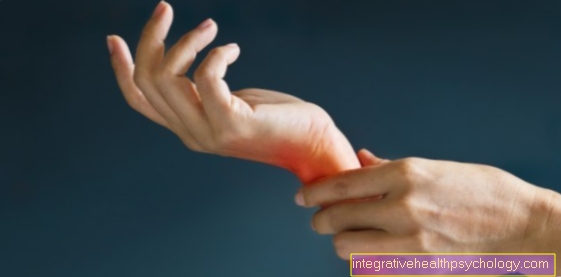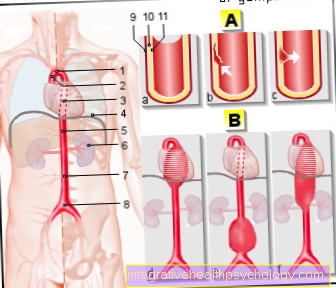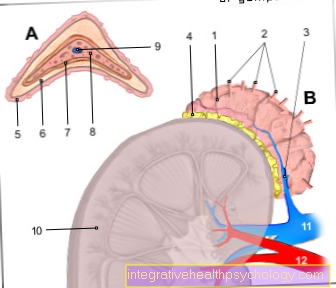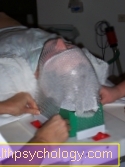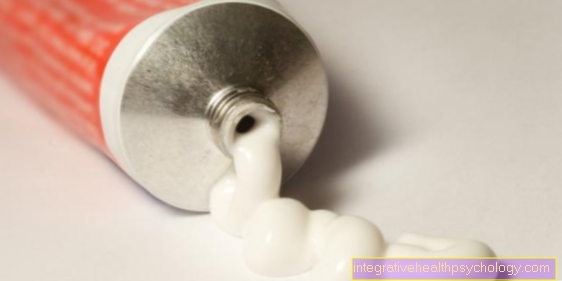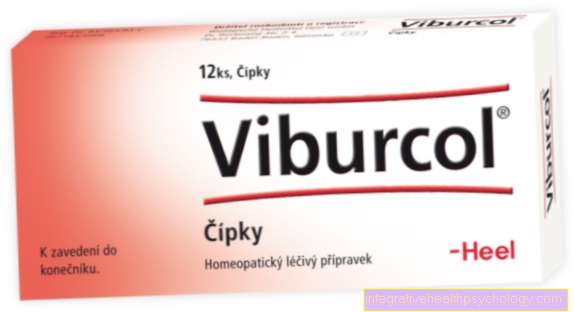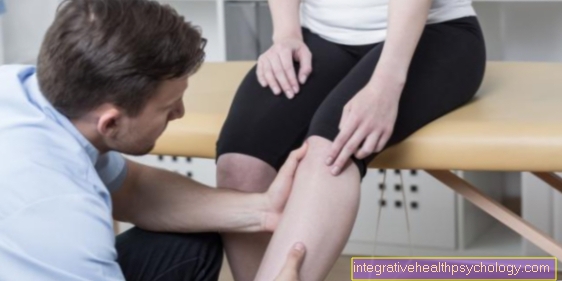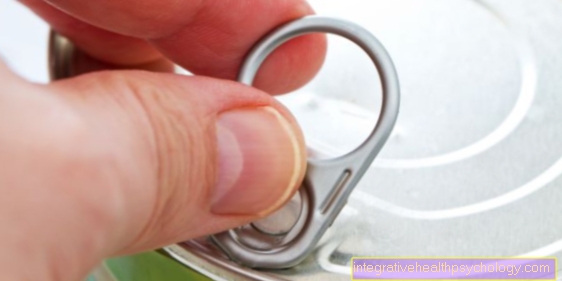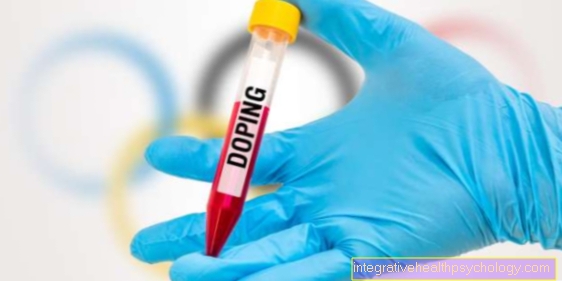Therapy of scapholunal dissociation / SLD
Synonyms in a broader sense
- Scapholunal dissociation
- Scaphoid dislocation
- Wrist ligament injury
- distal radius fracture
- Hand injury
These types of therapy exist
In principle, scapholunal dissociation can be treated both conservatively and surgically. Conservative therapy is a treatment method for slight displacements of the scaphoid and lunar bone, if no other accompanying injuries are present. In addition to immobilization and rest, it also includes pain therapy adapted to the patient. After a certain period of time, light exercise therapy must be given to restore and maintain mobility and to strengthen the ligamentous apparatus of the wrist in order to prevent the bones from shifting.
The surgical procedures available are joint speculation, direct suturing of the scapholunal ligament, restoration and transplantation of a ligament as well as partial and complete stiffening of the affected joints.
The choice of therapy method depends on the severity of the injury, the prospect of recovery, the age of the person affected and the patient's wishes.
Conservative therapy
Conservative therapy is used for slight dissociations of the two carpal bones. A reduction must be carried out early after the injury. The bones are pushed back into their original positions from the outside with pain relief. Further conservative therapy consists of consistent immobilization of the wrist. Hand bandages or plaster casts can be used for this. The immobilization should be done for 4-6 weeks.
Then the wrist should first be protected. For this purpose, tape dressings can be glued. At the beginning of the treatment, the hand should be compressed, cooled and raised to prevent bruising and swelling.
During the entire duration of the treatment, painkillers can be taken as required to alleviate the symptoms, depending on individual needs.
OP
There are several surgical procedures available, depending on the severity of the injury. With the help of what is known as "keyhole surgery", many treatments for low-grade scapholunal dissociation can already be carried out. Ligament parts can be removed, cartilage and bone pieces can be removed from the joint space and the anatomical position of the bones can be examined in detail.
However, for sutures and more extensive operations, an incision must be made over the joint. The scapholunal ligament can be sutured directly within 6 weeks of the injury. Afterwards this is often no longer possible, so that surgical ligament reconstructions or ligament transplants can be considered. However, these procedures often have little chance of success.
The last option for surgical therapy is partial stiffening of the wrist. Even with cartilage damage and osteoarthritis of the joints, this can still be carried out and provides a good and painless result in the long term. Only the mobility of the wrist is restricted by this treatment.
When do you need an operation?
There are many different manifestations of the disease in scapholunal dissociation. A fall or an act of violence can damage the ligaments of the carpal bones, whereupon they can emerge from their rigid framework. If the small carpal bones leave their anatomical place, one speaks of a dislocation.
However, if there are also tears in the ligaments, damage to the articular cartilage, significant displacement of the scaphoid or lunar bone, or even bone damage, surgical procedures must be considered. The primary goal is to preserve the anatomical articular surfaces and positions of the bones and to heal any instabilities or accompanying injuries. If the bones become displaceable due to the rupture of ligaments, simple repositioning and immobilization are often not enough. Surgical therapy is particularly necessary in the event of a fracture of the scaphoid bone in connection with the injury in order to prevent osteoarthritis and wear and tear in the wrist in the long term.
Aftercare
In the case of conservative immobilization or after surgical therapies, treatment for 6 weeks is often necessary. During this time, ligament structures can grow together stably and injuries can heal. The joint should be splinted in a cast or bandage and immobilized. Even after the 6 weeks, rest is still indicated. The wrist should be mobilized slowly through active and passive movement exercises in order to restore mobility. The goal of all therapies is the best possible and pain-free movement of the wrist over the long term.
Duration
The duration of treatment is often given as 6 weeks for both conservative and surgical therapies. However, the wrist must also be protected further and slowly mobilized. A further treatment period of 6 weeks achieves good and stable mobility of the joint. The duration of the complaints can vary greatly from person to person. In many cases, the pain subsides after a few weeks as the swelling subsides.
In rare cases, the pain may persist beyond the treatment period and indicate long-term damage and wear to the joint.
Note
You are here in the subtopic Therapy of scapholunal dissociation. General information on the subject can be found at Scapholunal Dissociation (SLD).
Complications
The complication the untreated or overlooked (1st and 2nd injuries are often difficult to diagnose) scapholunal dissociation / SLD is the development of osteoarthritis. Due to the unfavorable position of the individual carpal bones against each other, the sliding surfaces can no longer slide optimally against each other and wear and tear of the cartilage develops. The result is pain and restricted mobility.
forecast
The prognosis of scapholunal dissociation / SLD is difficult. Surgically corrected injuries can heal without demonstrable damage or osteoarthritis can occur despite optimal care. Higher-grade, untreated injuries practically always lead to osteoarthritis in the wrist.

